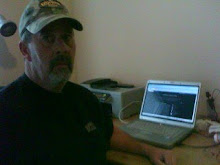Disorganized movements rely upon swarming. Swarms are difficult to defend against. If you cut a swarm in half, you have two swarms. If you eliminate one of the resulting swarms, you still have a swarm. Disorganization breeds. Organization grows. The many and dispersed are a more difficult target than the large and concentrated.
Organizations takes their steps by design. If the design is flawed, the organization fails. Disorganization relies not upon design but upon evolution. The motivating notions of disorganization are memes. Memes evolve and memes compete. This process improves the motivating notions of disorganization. This process produces multiple courses of action. While some may fail, others are likely to succeed. Taken as a whole, disorganization is more likely to succeed.
The important thing to remember is that it is easier to destroy than to create that which is designed. Thus, the cost to those who lose the manifestation of their design outweighs by leaps and bounds the cost it takes to destroy it. That which evolves is cheap and when an effort is created to destroy the evolved entity, it merely mutates and evolves again, adjusting to the new conditions. As a process that fosters evolution, a movement based on disorganization will continue to survive, evolve, and expand without cost. The resource constraints placed upon the designed (e.g. government and corporate) and those absent from the evolved (a decentralized and disorganized opposition movement), favor the later.
The limits of disorganization
I do not propose a complete absence of organization. Instead I propose a disorganization of units. Units can be as small as a single individual, or as complex as cell of individuals working together. Cells may be internally organized, but they should not be statically organized cell to cell. The movement should have no commander. It should have no central committee or governing body. No global plans should be made. The modus operandi of each unit should be to think globally and act locally. Ideas, strategies, and tactics should float freely and compete as memes within the medium of the collective conscious.
Conclusions
We need to construct a disorganized movement. You need not apply to join. In fact, it might be better if you did not contact me, or anyone except those with whom you wish to form a unit. Your ideas, strategies, tactics, and lessons learned should be spread anonymously or by word of mouth. When you act, should you decide to act in resistance, attribute your actions to “the Resistance.” The growing din of disorganized disruption will be felt as an earthquake. There will be trembles. There will be pre-shocks. The tension will mount and, in time, there will be an earthquake. When that earthquake strikes, the organized edifice of the oppressor will fall like a house of cards.
Changes & Living a new way
9 months ago


















No comments:
Post a Comment